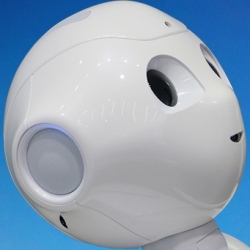
It’s not enough to have a great concept. You can have drawings, materials, and requirements all developed, but without a prototype, you’ll still fall short when it comes to finding financial backing. The robotics industry has grown a lot in the last few years. The trends of the past aren’t enough to survive in the future.
As a robotics engineer or product manager, you need to always be looking forward. Prototypes are suddenly easier and more affordable than ever with the introduction of things like 3D printing.
Now, it’s not optional to create a prototype for your robotic technology. You need to bring your product to life so you can take it to the next level. Why are these working samples so crucial for the industry? Keep reading to discover more.
A Functional Model
You can only go so far with your imagination. People want to see your product before they’re willing to trust their money to it. Having a functional model isn’t just exclusive to the robotics industry. Science, computers and educational sectors are also coming to demand higher levels of modeling.
When you’re working on an idea, that’s all it is. You might have drawings or figures to back up your research, but without a model, you’re left short. Your prototype is the first step towards receiving feedback, solving problems, and demonstrating the potential to possible financial supporters. Because 3D modeling software and 3D printing make it more possible than ever to produce prototypes affordably, there is little excuse for failing to make one in this day and age. Check this link to learn more about 3D printing technology.
Robotic Prototype Advantages
Now that you understand the full reasoning behind the production of prototypes during robotic product development, let’s break down the advantages. Not only are robotic prototypes a valuable way to build your financial backing, but it also helps streamline the development process.
Problem Solving
Testing robotic products takes time. Between alpha and beta testing, most problems can be solved before mass production. Developmental time is essential, and the faster it is to address potential issues, the better the results. Without a prototype, it’s difficult to work through challenges. You can’t test situations and issues without a real working product. Stop hypothesizing and start solving problems with your prototype.
Lower Costs
By creating a prototype, you can reduce your overall development costs because you have less difficulty solving problems. Working in theoretical terms can be costly when challenges arise with completed products. This could even lead to disastrous results if robotic prototypes are released without proper testing. There are so many affordable ways to create prototypes today that costs are lower than ever.
Faster Development
Without prototyping, it’s difficult to develop a product quickly from start to finish. Not only is it harder to gain patents and financial support without a prototype, but you can’t conduct accurate research. Think of prototyping like building a foundation. This forms the base on which you can create all other areas of your product, from design to marketing.
Competitive Production
Finally, having a prototype gives you a much-needed edge over the competition. There is a lot of saturation in almost every market today. Robotic production is facing a lot of competition, and in many cases, it’s a race to the finish line. Having a real product example to use when marketing, gaining funds, and even selling the product can help you stand apart in your industry.
Robotic prototyping has come a long way in the last few years. Now, having a solid product example is key to successful development. In this competitive market, it’s worth having every advantage you can to bring your product to consumers quickly and effectively.
